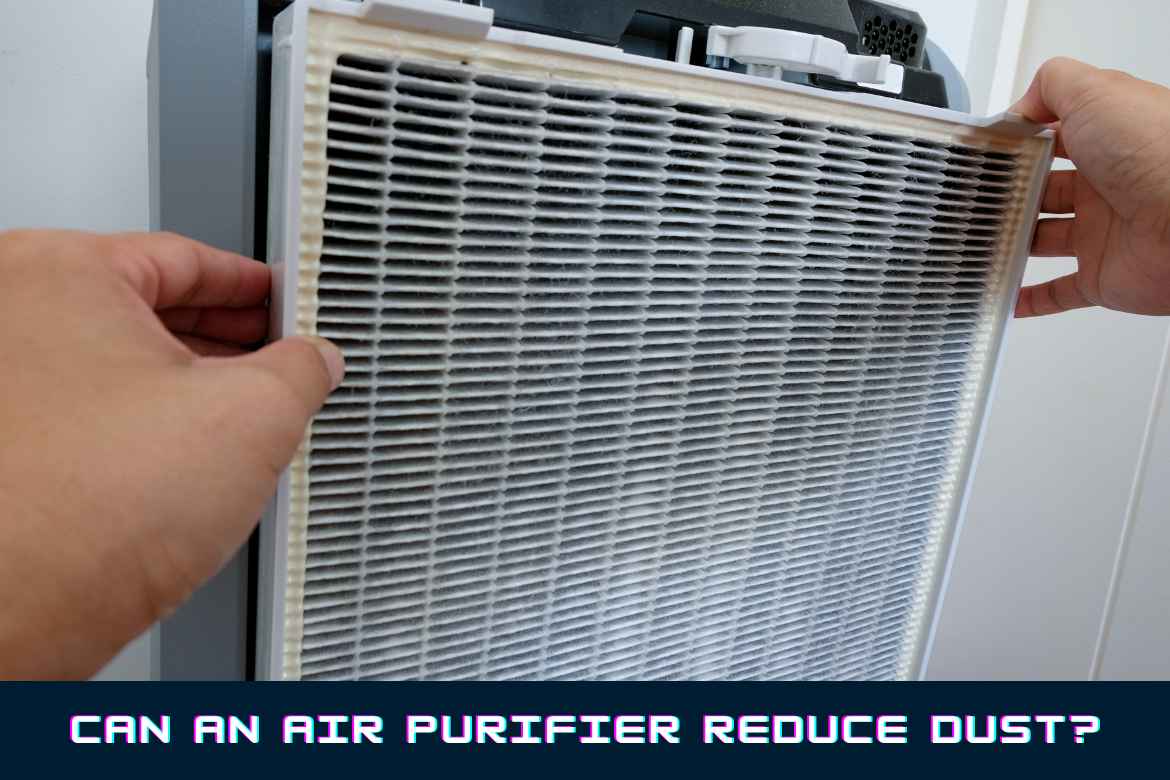In a world where indoor air quality is becoming a growing concern, the demand for solutions to purify the air we breathe is on the rise. Enter the trusty air purifier, a technological marvel that has been gaining significant popularity in recent years. According to a recent survey done in China, over 4% of households are considering or actively using air purifiers to enhance the quality of their indoor air. This surge in interest begs the question: Can an air purifier truly live up to its promise of clearing the air, particularly when it comes to the persistent foe of cleanliness—dust? Does an air purifier remove dust from a room?
To be fair, indoor air quality has become a hot topic in recent times, with individuals increasingly aware of the potential health impacts of pollutants that lurk in our living spaces. Among these concerns, the presence of dust particles ranks high on the list. Dust, made up of a complex mixture of tiny particles ranging from skin cells to pet dander, pollen, and more, has a way of finding its way into every nook and cranny, causing both aesthetic and health-related worries.
Curious about the question, “Does an air purifier prevent dust from entering my home?” Well, stay with us as we delve into answering your questions. We’ll not only provide insights into maintaining a clean indoor air environment but also shed light on how air purifiers operate. By the end, you’ll be equipped with the knowledge to make informed decisions for a healthier living space.
Table of Contents
ToggleHow Air Purifiers Work
Air purifiers, the unsung heroes of indoor air quality, operate on a simple yet ingenious principle: filtering and purifying the air we breathe. These devices draw in air from your surroundings and pass it through a series of filters or technologies designed to capture and eliminate pollutants, allergens, and irritants.
There are several types of air purifiers available, each armed with its own unique set of technologies to combat a wide array of indoor pollutants. One prevalent type is the High-Efficiency Particulate Air (HEPA) filter purifier. HEPA filters are remarkably effective at capturing particles as small as 0.3 microns—imagine a dust mite in its microscopic glory. These filters act as a physical barrier, trapping dust, pollen, pet dander, and even some bacteria as air is forced through the fine mesh.
Activated carbon filters, another popular option, specialise in targeting odours and volatile organic compounds (VOCs). They work through a process known as adsorption, where these chemicals adhere to the carbon’s porous surface. This technology is particularly effective for removing odours from cooking, pets, and indoor pollutants.
Ionisers, on the other hand, emit charged ions that attach themselves to airborne particles, causing them to clump together and fall to the ground or stick to surfaces. While ionisers can help with dust removal, some concerns exist over the potential generation of ozone as a byproduct.
Ultimately, the diverse array of air purifiers caters to specific needs, whether it’s dust, allergens, smoke, or odors. As we journey deeper into the world of air purification, we’ll unravel the mechanics behind these technologies and uncover their role in addressing the eternal quest to rid our indoor spaces of that pesky dust.
The Role of HEPA Filters
1. Detailing HEPA Filtration Technology
2. Capturing Particles as Small as 0.3 Microns
3. Effectiveness in Removing Various Airborne Particles
When it comes to dust removal, HEPA filters excel. Dust particles are no match for these filters, as they are effortlessly snagged within the filter’s fibres as air passes through. Moreover, HEPA filters tackle a wide range of other pollutants, making them a versatile choice for enhancing indoor air quality. Pollen, pet dander, dust mites, and even tiny allergenic particles find themselves ensnared by the filter’s grasp.
However, it’s important to note that HEPA filters may have limitations when it comes to removing ultrafine particles, such as some volatile organic compounds (VOCs) and nanoparticles. This is where the interplay of multiple air purification technologies often comes into play, as complementary methods can address the spectrum of pollutants present in indoor environments.
As we continue our exploration, we’ll dive deeper into the world of particle sizes too, examining the full scope of dust particles that infiltrate our living spaces and how air purifiers can effectively combat them.
Addressing Different Sizes of Dust Particles
1. Diverse Dust Particle Sizes
2. HEPA Filters and Particle Size Efficiency
3. Complementing HEPA Filters for Ultrafine Particles
Effectiveness of Air Purifiers in Dust Removal
1. Scientific Validation
2. Real-World Scenarios
Beyond the laboratory, real-world scenarios also testify to the prowess of air purifiers. Allergy sufferers often report noticeable relief when using air purifiers, particularly in dust-prone environments. Homes with pets, notorious dust contributors, have experienced cleaner air and reduced allergy symptoms after implementing air purifiers.
These findings collectively paint a picture of air purifiers as effective tools for combating dust. However, it’s important to consider factors such as room size, filter quality, and maintenance practices, which can influence the degree of effectiveness.
Factors Affecting Dust Removal
1. Room Size and Air Exchange Rate
2. Air Purifier Quality
3. Optimising Placement and Usage
4. Usage Consistency
Additional Filtration Technologies
1. Activated Carbon Filters
2. Pre-Filters
3. Enhancing Overall Air Quality
Final Words
In the pursuit of a dust-free haven, air purifiers emerge as valuable allies on the battlefield of indoor air quality. Armed with HEPA filters, activated carbon filters, and innovative technologies, these devices prove their mettle in reducing dust, allergens, and pollutants that stealthily invade our living spaces. Scientific studies validate their efficacy, and real-world scenarios illustrate their potential to create cleaner, fresher air.
However, the question “Will an air filter reduce dust?” isn’t one that can be answered with a simple yes or no. Room size, air exchange rate, and proper maintenance are just a few examples of the variables that affect how well air purifiers remove dust. Yet, armed with knowledge and a strategic approach, you can harness the power of air purifiers to enhance indoor air quality, creating an environment where dust particles dare not linger.

